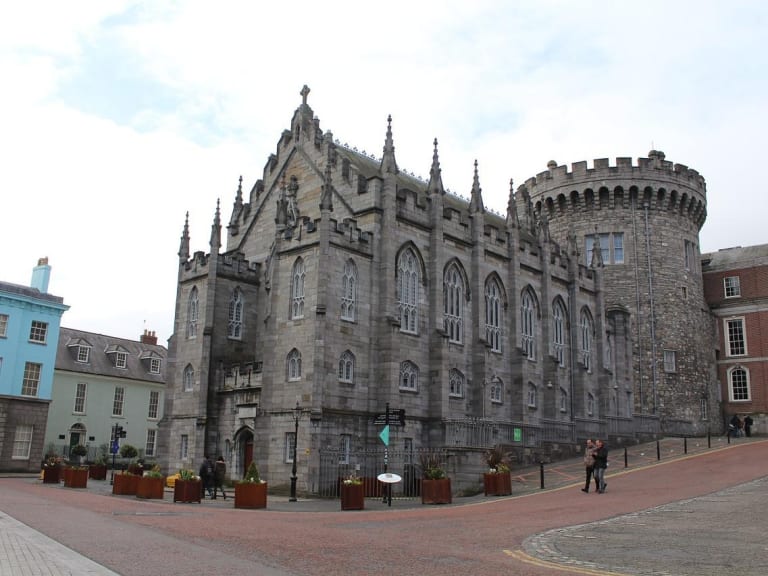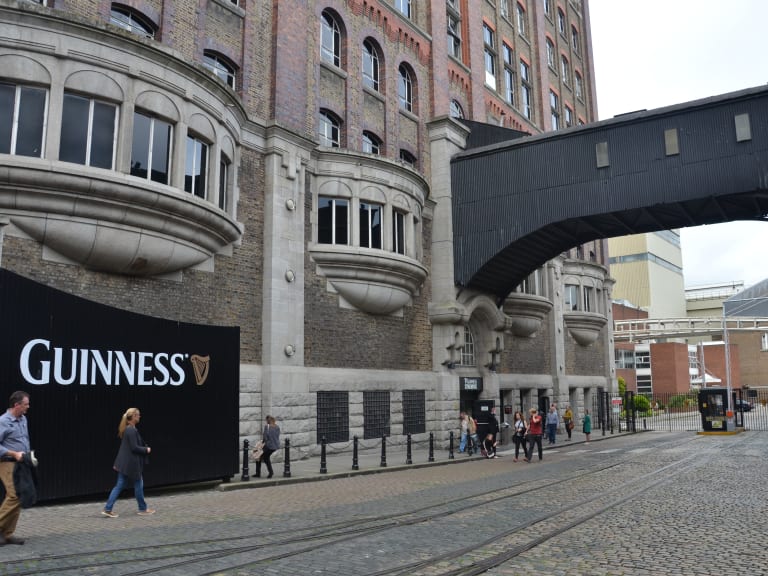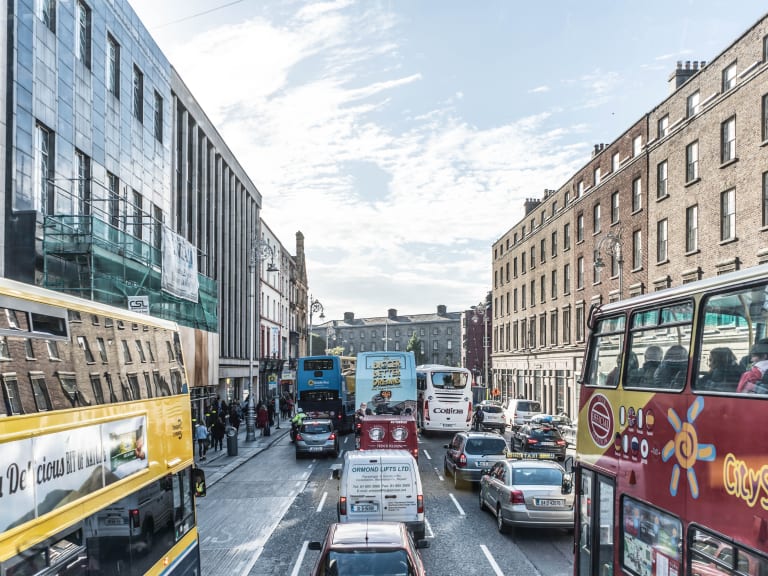More about: Dublin in 2 Days: everything you need to know
Dublin is a very interesting city that does not have an excessive number of monuments and tourist sites. All of them are also very concentrated so seeing the city almost in its entirety in 48 hours is by no means a chimera.
In one day you can visit the entire historic center of the city and have another second day to visit some interesting point that is further away from the center of Dublin. To optimize your time and visit everything in an efficient way I share with you this itinerary designed to know the best things to see and do in Dublin in two days.
Day 1: Historic Centre of Dublin

On the first day of our trip to Dublin we will tour the city center where most of the interesting monuments are concentrated. Since they are very close to each other it is very convenient to go from one point to another on foot without having to take public transport and not waste too much time on the journey. The places we will see in our first 24 hours are:
Trinity College
It is curious that one of the most visited places in Dublin is its university. But it is not just another university; Trinity College is one of the oldest and most prestigious in the world.
Located in the heart of Dublin, Trinity College can be visited and stroll through its historic buildings and green areas full of culture and history.
Within the complex it is worth mentioning its library, known as the Old Library. It is one of the most beautiful public libraries in the world, if not the most.
Other interesting points are the bell tower, the dining room or the Douglas Hyde Gallery. Trinity is the ideal place to start this itinerary also because of its central location.
Molly Malone Statue

Near Trinity College itself is the statue of Molly Malone, the icon of Dublin. The bronze statue represents the figure of a woman who supposedly lived in the seventeenth century and would exercise two trades, that of fisherwoman and prostitute.
It is not known for sure if Molly Malone really existed, but thanks to a song of the nineteenth century called Molly Malone or Cockles and Mussels her figure became famous to such an extent that it is a popular anthem of the city. Tradition dictates that visitors who approach the statue and touch the statue's breasts will return to Dublin.
Grafton Street
In this pedestrian street is the statue of Molly Malone and is the main street of Dublin. The main stores and brands have their premises in Grafton Street making it one of the most expensive streets in Europe.
Apart from that, it is the busiest area of the city and is full of establishments of all kinds, good atmosphere and street artists.
Merrion Square Park
Fleeing from the hustle and bustle of the downtown streets we can visit the Merrion Square park. It is located in the center so we do not have to move much to enjoy a green area with lots of charm.
In its beginnings it was a park exclusively for the people of the neighborhood with the same name. Among these people were figures such as Oscar Wilde, Daniel O'Connell and George Russell who have their own monuments in the park.
In the same park we can also visit an air raid shelter of the Second World War, its lake and the flora and fauna that coexist in this beautiful space.
Dublin Castle and City Hall

This building in the center of the city is not the typical castle with battlements that one might think of. It is a complex that has served various functions throughout history, such as a Viking settlement, military fortress, court of justice and so on. Today it serves as a town hall and a place for official receptions.
Dublin Castle can be visited in less than an hour with a guided tour in which you will know the rooms once occupied by royalty, the throne room or the gunpowder tower. Although from the outside it does not look like a castle, partly because of the great fire it suffered in 1683, inside it retains all the charms of one at the height of great kings.
St. Patrick's Cathedral
Dublin has two cathedrals, but the most interesting to know is the one named after the famous saint and patron saint of Ireland, St. Patrick. This cathedral was built next to the well in which, according to legend, St. Patrick baptized those who wanted to convert to Christianity.
This is the largest cathedral in Ireland and its attraction, apart from the legend linked to the saint, lies in its historical musical tradition. Since 1742 it has a choir that has sung the most important religious works and that today still celebrates sung masses, being the only one of these characteristics of all Ireland and Great Britain.
Temple Bar district
After a long day touring the history of Dublin, it's time to disconnect and what better than to do it like a real Irishman in one of the legendary Irish pubs.
The ideal place for this is the neighborhood of Temple Bar. This central neighborhood concentrates a large number of pubs that attract locals and tourists and turn the nightlife into a multi-cultural party that you can not miss if you are in Dublin.
If you want to know which are the best pubs in Dublin in this link you can discover the 10 most recommended.
Day 2: Kilmainham Gaol Prison, Guinness Storehouse and Phoenix Park.

After getting to know the center of Dublin, it's time to get away from it all to visit two of the most visited places in the city: the Kilmainham Gaol prison and the Guinness Storehouse experience.
Both sites are two of the main attractions of the capital and, although they are far from the center, they are very close to each other. To complete the trip what better than to enjoy the typical Irish green in the largest park in Dublin. A natural space where people and deer coexist.
Kilmainham Gaol Prison
It sounds strange to say that one of the most historically significant places in Dublin is a prison but it is. Kilmainham Gaol Prison was home to some of the most important revolutionary figures in the history of Ireland in its struggle for independence.
Visiting this prison generates some impression, as it was the scene of some painful executions and episodes.
The visit puts you right into the skin of some of the most important revolutionaries, such as Charles Parnell, Henry Joy McCracken or Robert Emmet, whose cells are preserved plaques with their names. It is a visit that can generate some impression but certainly worthwhile to learn about the history of the city of Dublin and Ireland.
Guinness Storehouse

Ireland and Dublin are synonymous with beer. A good example of this is the Guinness brand, one of the most prestigious breweries in the world and whose origin is located in the same city. In 1759, its founder, Arthur Guinness, opened a brewery in Dublin that evolved over time to become one of the most important breweries in the world.
The Guinness brewery can be visited today to learn first-hand about the Guinness brewing process, the history of the brand and, of course, a beer tasting. The brewery is practically adjacent to Kilmainham Gaol Prison so both can be visited in a single morning.
Phoenix Park
Green is the color that best represents Ireland without a doubt. In great part also because of the green of its meadows and nature. Also of the parks of Dublin and specifically the largest park in Europe. To the west of the city, near the Guinness Storehouse, is the Phoenix Park.
This park occupies more than 700 hectares and has the peculiarity that it is also a nature reserve where a herd of deer lives. In fact, it was created in 1662 with the aim of protecting the deer that live in the area and today you can walk quietly through this park while you see several of these animals in freedom.
It is not uncommon for some deer to approach you asking for food and you can even pet them in exchange for some bread crumbs. A beautiful place to breathe nature and an idyllic setting to say goodbye to Dublin after a trip well spent 48 hours in the Irish capital.
Tips for visiting Dublin in 48 hours

To make the most of a two-day trip to Dublin we must take into account a number of points to make the most of the time and that nothing spoils your trip. For this I leave you these tips that can be useful in the capital of Ireland
- The city center is small and it condenses most of the monuments that we will visit. We can see them all on foot, but it is highly recommended that we wear comfortable shoes.
- To go to places like the Guinness Storehouse or Kilmainham Gaol Prison closer to the outskirts it is best to take the bus. Buses 13 and 40 from O'Connell St. or 69 and 79 from Aston Quayel are the best to leave us near the area of the prison and the Guinness Storehouse.
- It is highly recommended that you study the option of taking the Dublin Pass, because with it you can save on your tickets and have access to almost all tourist attractions in the city.



